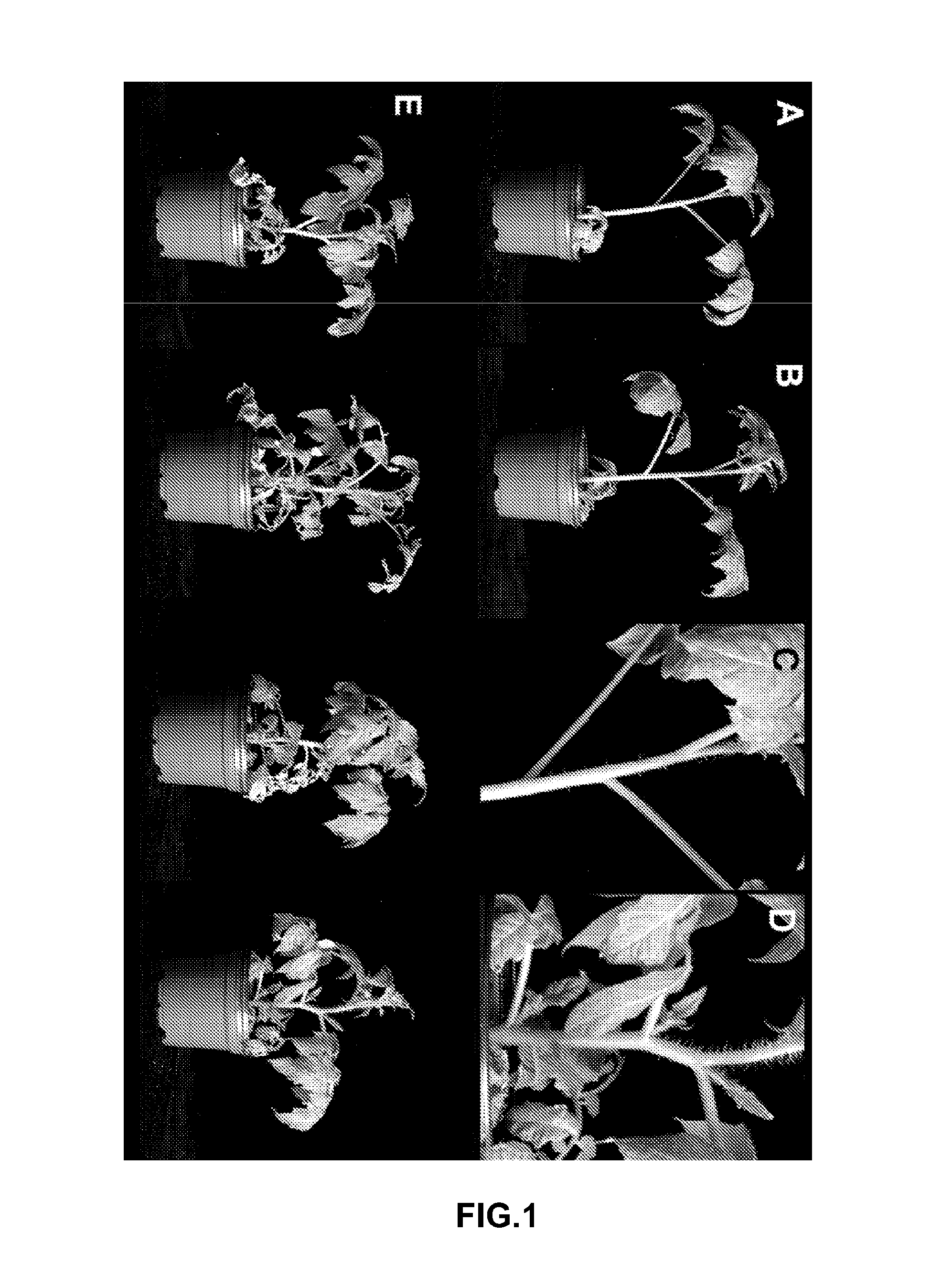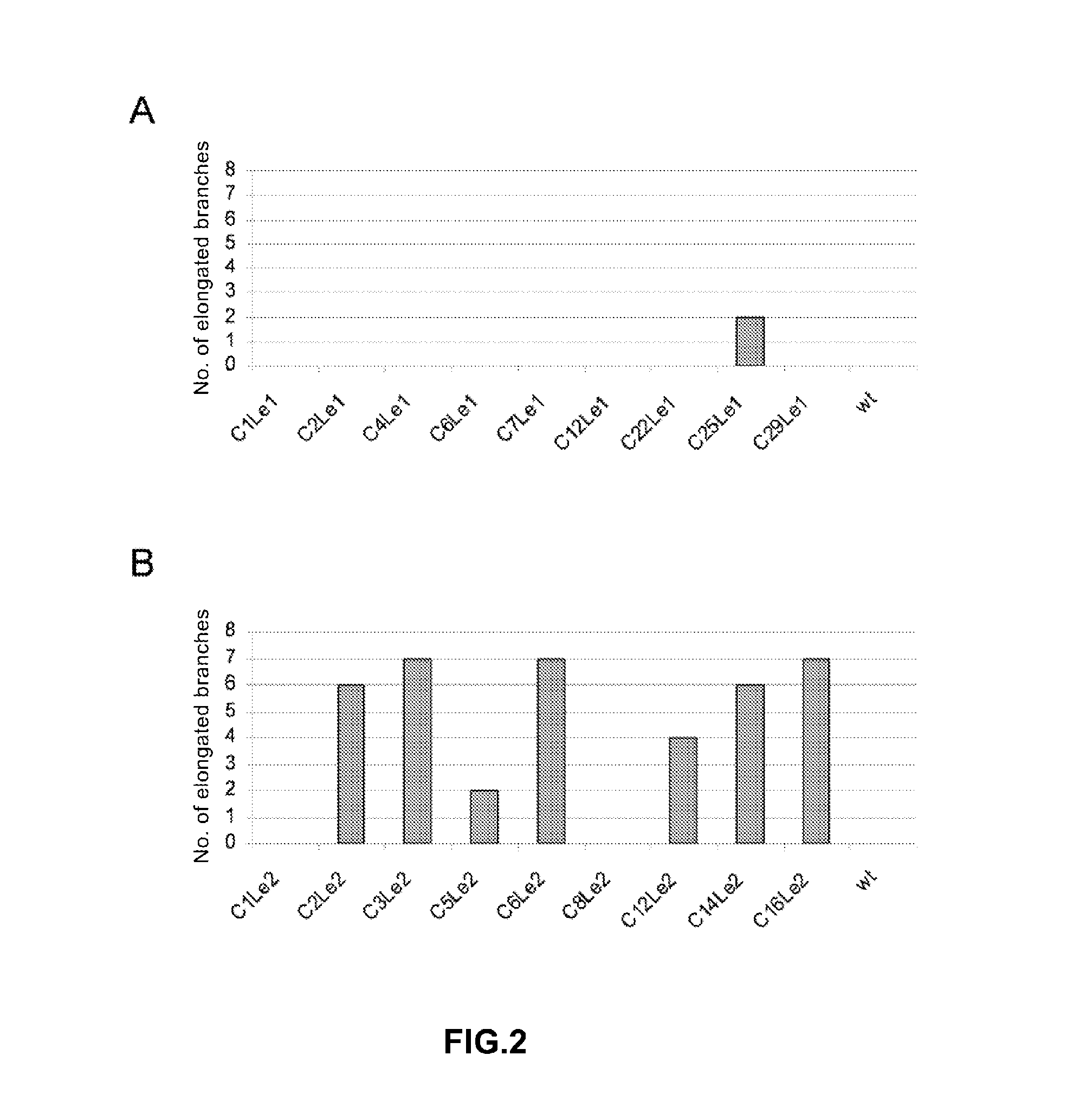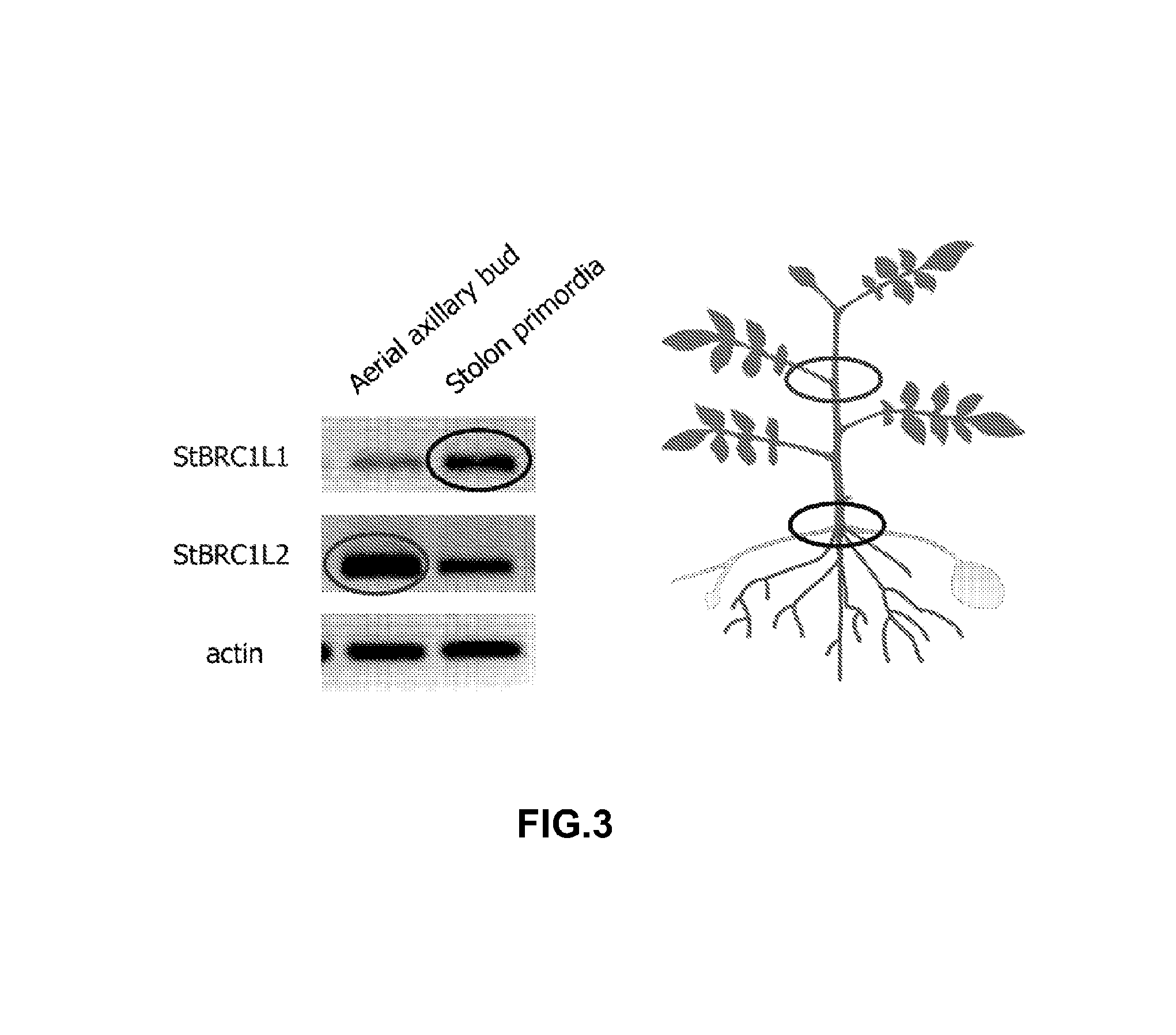Genes regulating plant branching, promotors, genetic constructs containing same and uses thereof
a technology of genes and plant branches, applied in the field of genes regulating plant branching, promotors, genetic constructs containing same, can solve the problems of high production line production cost, inability to achieve this character, and inability to produce undesired effects,
- Summary
- Abstract
- Description
- Claims
- Application Information
AI Technical Summary
Benefits of technology
Problems solved by technology
Method used
Image
Examples
example 1
Cloning of the Genomic, Promoter and Coding Sequences of the Genes SIBRC1L1 and SIBRC1L2
[0183]To clone the orthologues to BRC1 of the tomato plant a search was performed of BRC1-type TCP genes in different databases of solanaceae: TIGR Solanaceae Genomics Resource BLAST page, TIGR Plant Transcript Assemblies Database and SOL Genomics Network. To carry out the comparison, the sequence of amino acids of the TCP box of the BRC1 protein of Arabidopsis was used, and an EST (Expressed Sequence Tags) and a cDNA was found whose translation gave rise to proteins with high homology with BRC1 of arabidopsis. The EST EST522935 had 447 bp and the partial cDNA AY168167, 415 bp. The nucleotide sequences of the genes SIBRC1L1 and SIBRC1L2 are collected in SEQ ID NO: 7 and SEQ ID NO: 8, respectively.
[0184]To amplify the complete cDNAs (SEQ ID NO: 15 for SIBRC1L1 and SEQ ID NO: 16 for SIBRC1L2) of both genes, two different strategies were followed. In the case of SIBRC1L1, two nested primers were des...
example 2
Generation of Transgenic Tomato Plants (Solanum Lycopersicum, Moneymaker Variety) with Loss of Function of the Genes SIBRC1L1 and SIBRC1L2 Silenced by the RNAi Technique
[0188]The DNA fragments chosen to perform the RNA interference are situated between the TCP box and the R box, highly conserved areas and characteristic of the TCP genes. Said fragment rings exclusively with the part of the chosen sequence which guarantees that the silencing is specific for each gene separately, SIBRC1L1 and SIBRC1L2.
[0189]The fragment used to silence the gene SISRC7L1 has 225 base pairs, and the sequence is included in SEQ ID NO: 11, and constitutes the seventh polynucleotide of the invention.
[0190]The fragment used to silence the gene SIBRC1L2 has 415 base pairs, and the sequence is included in SEQ ID NO: 12, and constitutes the eighth polynucleotide of the invention.
[0191]Strategy Used for the Generation of the RNAi Constructions for the Genes SIBRC1L1 and SIBRC1L2.
[0192]To obtain the hairpin stru...
example 3
Cloning of the Genomic, Promoter and Coding Sequences of the Genes StBRC1L1 and StBRC1L2
[0236]To clone the orthologues to BRC1 of the potato plant a search was performed of BRC1-type TCP genes in different databases: TIGR Solanaceae Genomics Resource BLAST page, TIGR Plant Transcript Assemblies Database and SOL Genomics Network. To carry out the comparison, the sequence of amino acids of the TCP box of the BRC1 gene of Arabidopsis was used. Two unigenes were found: TC168465 and TC129597 which were called StBRC1L1 and StBRC1L2, respectively. Furthermore, knowing the high homology existing between tomato and potato, and having cloned the SIBRC1L1 tomato gene, the same primers were tested with genomic potato DNA, for end 5′ Le1 (SEQ ID NO: 17) and Le2 (SEQ ID NO: 18), the latter being a nested primer of the previous, and Le3 (SEQ ID NO: 25) for end 3′. Based on this sequence a specific primer was designed (racest1-5\ SEQ ID NO: 34) to localize end 5′ of the gene using the PCR-RACE tech...
PUM
| Property | Measurement | Unit |
|---|---|---|
| diameter | aaaaa | aaaaa |
| concentration | aaaaa | aaaaa |
| concentration | aaaaa | aaaaa |
Abstract
Description
Claims
Application Information
 Login to View More
Login to View More - R&D
- Intellectual Property
- Life Sciences
- Materials
- Tech Scout
- Unparalleled Data Quality
- Higher Quality Content
- 60% Fewer Hallucinations
Browse by: Latest US Patents, China's latest patents, Technical Efficacy Thesaurus, Application Domain, Technology Topic, Popular Technical Reports.
© 2025 PatSnap. All rights reserved.Legal|Privacy policy|Modern Slavery Act Transparency Statement|Sitemap|About US| Contact US: help@patsnap.com



